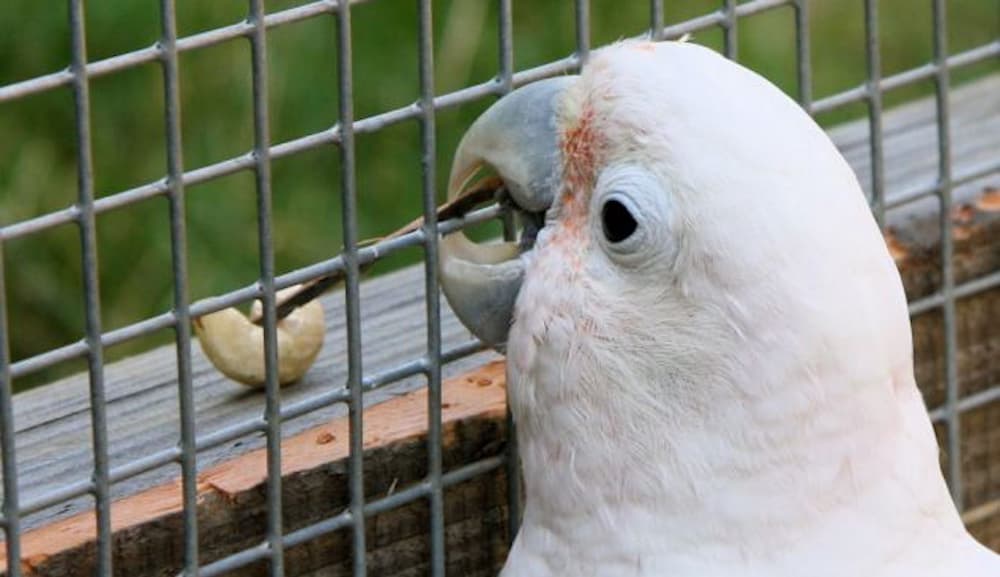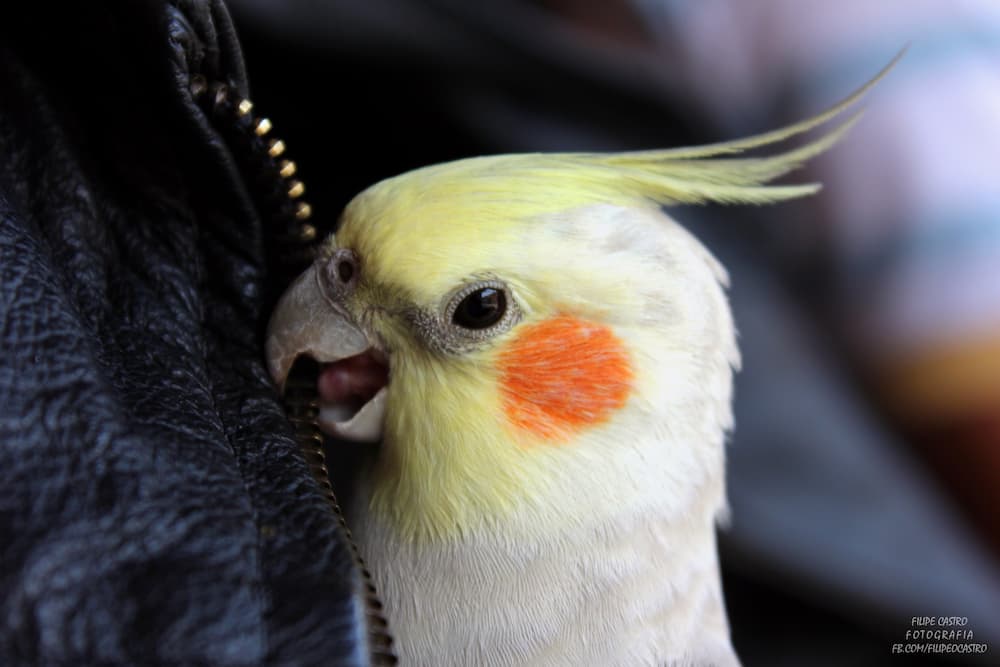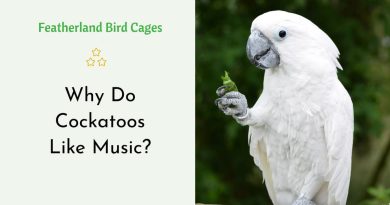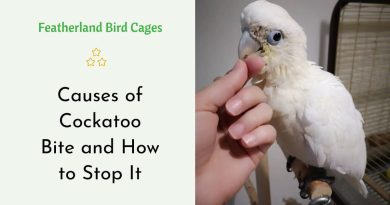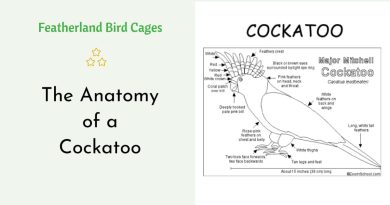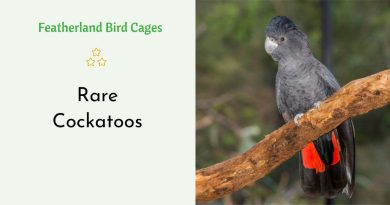Cockatoo Beak Grinding
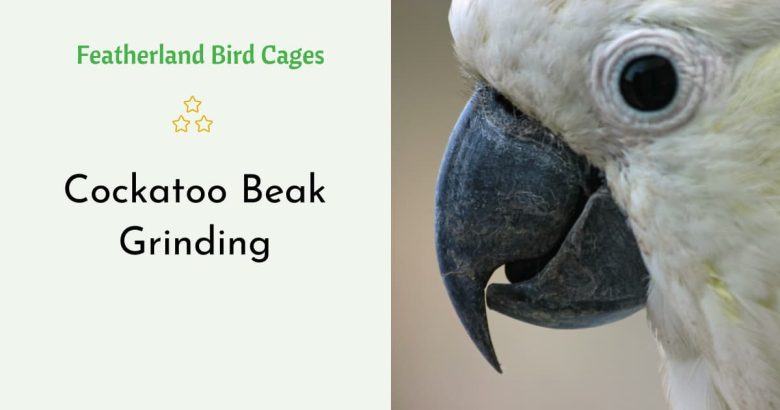
Cockatoo beak grinding is a common bird behavior and goes hand-in-hand with their typical cockatoo pose: feathers slightly puffed up in a contented state. It usually occurs before bedtime or after eating their favorite roosting perch food.
In the wild, cockatoos use a wide range of tools to obtain their food. They have solved puzzle boxes and fabricated rakelike tools to retrieve objects from their habitats.
Scissor Beak
Scissor beak, also called crossed beak or crooked beak, occurs when the top and bottom beaks do not align properly. This can be caused by genetics or by a problem during hatching.
In most cases a chick with a cross beak can live a normal life. However, it is important to monitor the chicken’s weight regularly with a gram scale and ensure she is gaining enough weight. Chickens with a cross beak cannot explore or peck for food so it is important to monitor them closely to make sure they are eating and drinking enough. It is also possible that they may be picked on by other flock members and therefore require a more secluded area.
It is recommended to keep the beak trimmed and reshaped frequently. Chickens have a quick in their beak just like fingernails, so care must be taken not to cut the beak too short or it will bleed. Clipping the beak can be done with a pair of dog nail clippers or cuticle trimmers.
Parrot Beak
The beak is a marvel of nature’s engineering. Like fingernails and hair, it’s covered in hard keratin that’s continuously growing and wearing down, allowing the parrot to extract nutrients from naturally encased foods such as seeds, fruit and nuts.
These amazingly dexterous creatures also use their beaks to interact with other members of their flock. Their gentle nibbling and beak tapping often serve as greetings, bonding exercises or playful interactions.
In the wild, the beak serves as an amazing defensive weapon, enabling the parrot to take down snakes, eagles and monkeys. It’s also a resourceful tool at mealtime, busting open nut shells and peeling fruit without the aid of their hands. The strength of a parrot’s beak is what allows them to forage for food and play with other cockatoos. Like any important part of the body, the beak needs to be kept in good condition. An overgrown beak can impede a bird’s normal functions and lead to a variety of health problems.
Rubber Bill
The rhamphotheca is the thick, hard layer that covers the bony jaws (the upper-maxilla and lower-mandible). It is composed of hard protein shells called keratin, which grows over time from the cere. The thickness of the rhamphotheca helps prevent over-grooming and damage to the bone underneath.
Cockatiel and cockatoo beak grinding is normal behavior and can be seen prior to bedtime as the birds prepare for their mid-day nap or at the end of the day as they settle down to sleep. However, if excessive beak grinding is accompanied by other abnormal behaviors such as chewing on cage bars or plucking out feathers, contact your avian veterinarian as soon as possible.
While it is true that parrots have a tendency to bite when overly excited or provoked, it is also the case that most parrots, and particularly cockatoos, do not want to hurt you. While a cockatoo may bite if it is frightened of certain family members, it would not typically do so unless those people were trying to take its food or other items away from it.
Overgrowth
Often, an overgrown beak is simply the result of an improperly trimmed lower beak. An avian veterinarian can trim the beak to correct the problem, but it may take several sessions of gentle yet firm pressure to get the beak back in shape.
A beak is made of keratin, just like your fingernails. It grows continuously and needs to be worn down, but sometimes it gets overgrown. An overgrown beak can cause your bird to chew his cage bars or pluck his feathers. He may even struggle to eat, drink, and preen comfortably.
Typically, an overgrown beak is caused by liver disease from a high fat, low nutrient all seed diet that has been fed for many years. The excess fat interferes with the liver’s normal metabolic process, which affects the production of amino acids. One amino acid that is essential for normal beak growth is glycine. As a result, the liver cannot properly make glycine from other amino acids.


